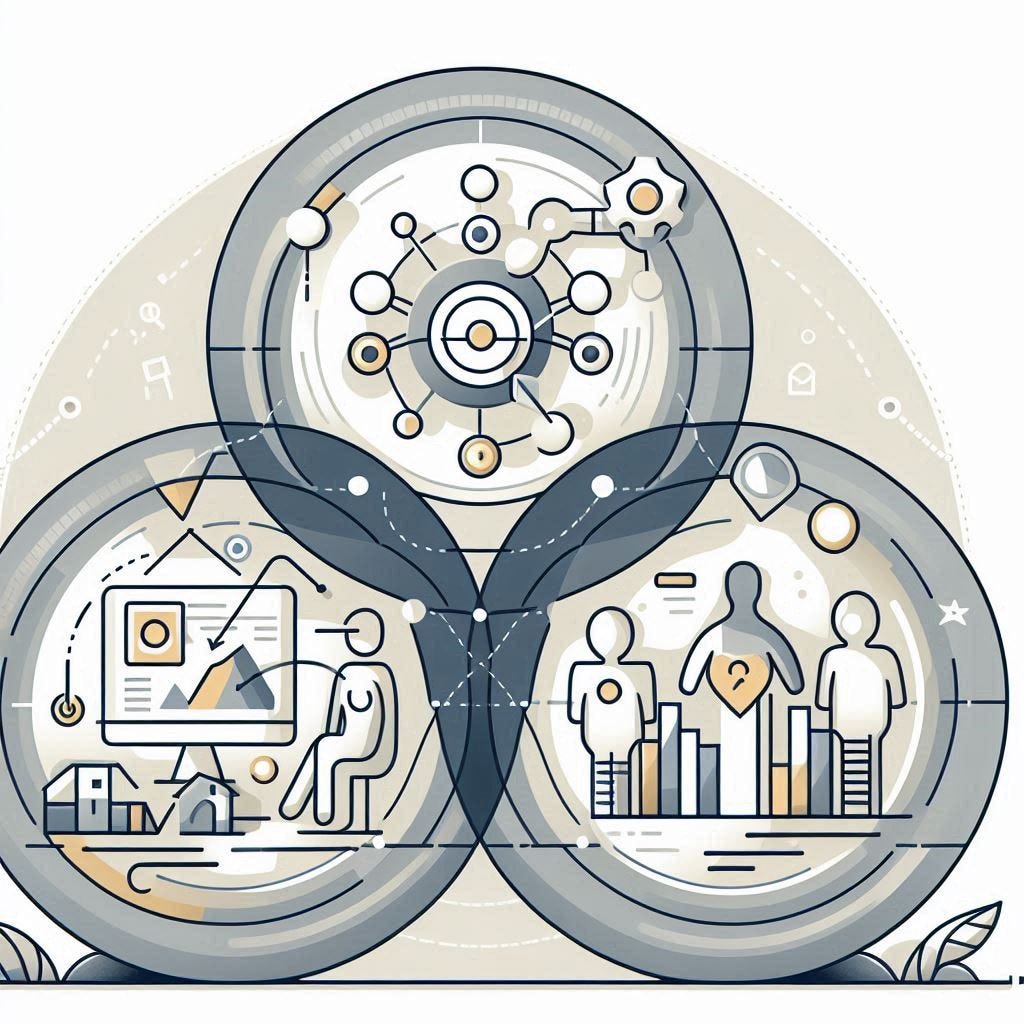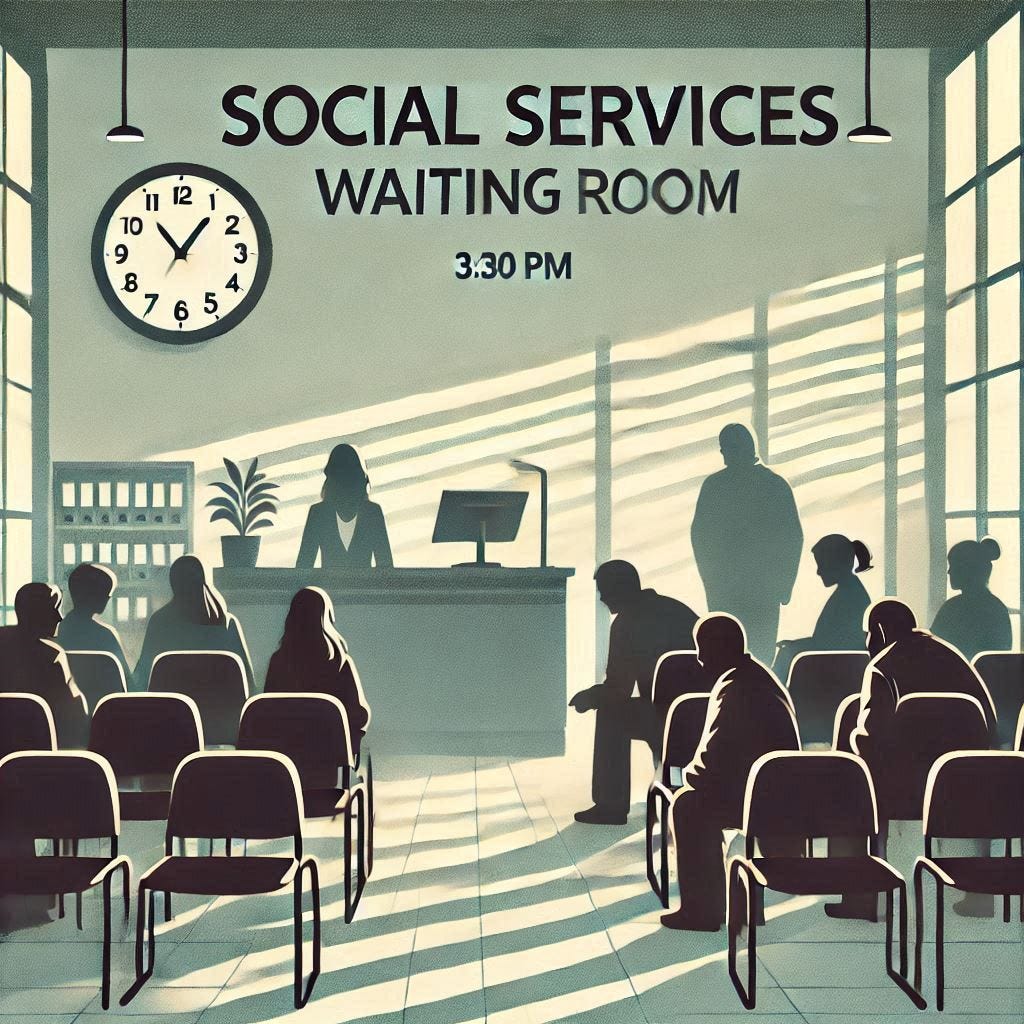In our previous exploration of how national guidelines meet local practice, we examined the role of meta-analyses and systematic reviews in building reliable knowledge. Now, let's delve deeper into another dimension of professional knowledge - tacit understanding. This unspoken, experiential knowledge shapes expert practice, but it also carries inherent limitations we must acknowledge.
As Harry Collins1 describes in his analysis of expertise's evolution, we've moved through three distinct waves of understanding: from the absolute authority of scientific experts (Wave 1 - where this favorite interview with Richard Feynman must be the perfect illustration of it, right?), through constructivist skepticism of all expertise (Wave 2), to our current recognition that different forms of valid expertise exist (Wave 3). This evolution helps us understand both the value and limitations of tacit knowledge in professional practice. Bill O'Hanlon2 captures this duality perfectly:
We are smart about what we're smart about, dumb about what we're dumb about - and sometimes, we're smart about things it's dumb to be smart about.
This insight reminds us that while tacit knowledge is essential for expert practice, it can also perpetuate biases and blind spots.
The Shadow Side of Tacit Knowledge
While tacit knowledge enables sophisticated professional judgment, it can also entrench biases and limitations. Our very expertise can sometimes create blind spots - areas where our confidence prevents us from seeing alternative perspectives or new evidence. This is why the scientific method is our societies cornerstone, and why systematic reviews and meta-analyses we explored in our previous discussion are so crucial - they help balance individual expertise with broader evidence.
Consider how this plays out in motivational interviewing (MI), a widely successful method that acknowledges both human potential and limitation. In MI workshops worldwide, practitioners explore their own change processes through simple scale questions: 'How important is this to you on a scale of 1-10?' and 'How confident are you that you could do it if you decided to, on a scale of 1-10?' These questions reveal how all human beings struggle with change in their own lives, highlighting the universal nature of ambivalence and resistance.
This recognition of universal human limitations doesn't diminish the value of expertise - rather, it enriches it. By acknowledging our limitations, we can better integrate different forms of knowledge.
The Search for Trustworthy Knowledge
Another interesting analysis in the theme of Human and the Machine is from Theodore Porter's3 work of different forms of objectivity. In his examination of how scientific and professional fields developed their practices, Porter identified a fascinating pattern: as external pressure for accountability increased, many fields moved toward what he called mechanical objectivity - standardized procedures and quantifiable measures that could appear more trustworthy to outsiders than professional judgment. This wasn't because such measures were inherently more accurate, but because they seemed more transparent and less dependent on individual discretion.
This historical insight helps us understand our own field's development. The drive toward standardized assessment tools and documentation systems in welfare work isn't simply about improving practice - it's also about creating trust in our work through apparent transparency and consistency. While mechanical objectivity represents the world of standardized procedures and quantifiable measures, Porter identified another form - disciplinary objectivity - which emerges from the collective wisdom and consensus developed through professional practice, refined through experience and shared understanding. This distinction is crucial for understanding the different ways we can know and validate knowledge in social work.
This distinction of Human - Machine thinking is between:
Associative thinking: The ability to engage with wholes and complex situations, to grasp multiple dimensions simultaneously, to understand context and nuance
Logical thinking: The capacity to work with defined, quantifiable aspects, to follow clear procedures, to analyze specific components
In welfare work, both these modes of thinking are essential, but tacit knowledge primarily operates in the associative domain.
Let me share a personal experience that illustrates this tacit dimension, from my work with financial assistance cases.
I once had a case with a young single mother who was gambling away her income before paying rent. On paper, there were clear grounds to reject her application for assistance - she had a job, a child to support, and housing she'd received help securing. But something prompted me to dig deeper and I asked, "How is this behavior serving you? What does it give you?" The question came from a place of genuine curiosity, assuming she was doing her best in her situation.
She broke down in tears, revealing she had AIDS and was terrified of dying. She explained that paying rent seemed pointless when she was focused on trying to win money to provide for her child's future. This revelation led to a completely different intervention approach, combining financial assistance with psychological support.
No standardized assessment would have captured this underlying reality, and in a stressed state of mind, I might have missed these crucial signals entirely.
The Challenge of Systematization
As welfare services become increasingly systematized and formalized, we face a crucial challenge: how do we preserve and develop tacit knowledge within standardized and formalized frameworks? We can identify several key tensions:
1. Multiple Organizational Realities
- The world of formal systems, documentation and control
- The realm of direct client interaction and support
- The space of professional development and learning
Each of these domains operates according to different logics and timeframes. While systematic approaches excel at handling explicit knowledge - procedures, guidelines, measurable outcomes - they often struggle to capture the nuanced understanding that emerges from direct practice.
2. Knowledge Translation
The movement of knowledge between contexts isn't simple transmission (as in the diffusion model, see more below) but active translation. When experienced practitioners mentor newcomers, they don't just pass on rules and procedures - they share:
Ways of seeing situations
Patterns of understanding
Practical wisdom about what works when
This translation process becomes particularly crucial as organizations implement new methods or systems. Success often depends not just on following procedures but on integrating them with existing knowledge.
The Interplay of Knowledge Types
When we examine how knowledge operates in welfare services, we often encounter what Bruno Latour4 calls the "diffusion model" - the idea that knowledge simply can spread from one context to another. But reality is more complex. Knowledge doesn't just diffuse; it transforms as it moves between contexts, requiring active translation between different forms of understanding and stakeholder interests.
This insight is particularly relevant for evidence-based practice, which requires a conscious and systematic use of multiple knowledge sources. Each source of knowledge must be not just transferred but actively translated and integrated, shaped by both national and local contexts including legislation, guidelines, and local conditions.
In this complex interplay, three essential knowledge sources emerge, each contributing uniquely to professional decisions (taken from the definition of the Swedish National Board of Health and Welfare);
Best Available Knowledge provides our systematic foundation through research evidence about interventions and their effects. However, since scientific evidence isn't available, we must sometimes rely on other knowledge sources while being transparent about the limitations of our knowledge and closely monitoring individual outcomes.
Professional Expertise, knowledge developed through practice, encompasses both technical skills and personal competence. This includes crucial capabilities like empathy, ability to identify individual problems, critical evaluation of information, and the skill to balance and integrate all available information in decision-making processes that involve service users. Professionals can also generate systematic knowledge by monitoring individual outcomes.
The Individual's Preferences, Situation and Context play a vital role, particularly when evidence is weak or ambiguous. A person who perceives an intervention as relevant is more likely to engage actively, increasing the probability of positive outcomes. Even when strong evidence exists for a particular intervention, local availability and individual circumstances might necessitate different choices.
The art of professional practice lies in weaving these sources together ethically and transparently. No single source automatically takes precedence; instead, their relative importance varies with each unique situation. This integration happens through dialogue between professionals and service users, with transparent documentation of decision-making grounds - a crucial aspect that facilitates evaluation and learning.
Then also comes the question of how we configure our systems, from local to national level, so that they are supporting the humans in them.
Creating Space for Tacit Knowledge
To nurture and develop tacit knowledge in today's welfare organizations we can use surprisingly simple practices. At its heart, it's about creating spaces and opportunities for professionals to learn from each other and reflect on their experiences together. Think of the insights that emerge during a team meetings where staff can discuss complex cases together help everyone learn from shared experiences and reflection. Having an experienced mentor to turn to when you're unsure about a situation can make all the difference in developing professional confidence and ensuring good onboarding. Even simple things like encouraging staff to work across team boundaries or creating informal learning networks can help spread valuable practical knowledge throughout an organization.
The challenge lies in the balance, as these spaces for learning and reflection is in relation to our busy workdays and societies limited resources. It means designing our systems and routines with flexibility in mind - balancing our documentation requirements with some reflection, ensuring our work processes leave room for professional judgment, and creating opportunities for staff to learn from each other's experiences. When we get this right, we're not just preserving tacit knowledge - we're helping it grow and evolve to meet new challenges.
The Challenges of Modern Practice
Configuring systems to take good care of humans, in a heavily formalized society is a clear challenge. But there is a link between good care and healthcare and empathy. I will explore this in later episodes but want to point to researchers like Jeremy Howick5, that puts the spotlight on the importance of empathy for good healthcare results. He also points to the importance of culture, showing how problematic today's higher educations are, making doctors go from enthusiastic and optimistic to empathy declined because of a hidden corriculum (dare I say turning us into machines following formalizations in search for “the truth”!?). This truly is a question both for the working environment and staff health as well as a question of autonomy and good care for patients and care users.
Let me give you a personal example; The pressure of modern welfare work can sometimes force us into mechanical patterns that suppress this tacit knowledge. I recall working at a large office where the waiting room was always full, and we had to see all clients before the office closed at 4 PM. In such situations, it's easy to develop tunnel vision - asking only the required questions, making quick decisions, writing up the paperwork, and moving on to the next case. I could process seven clients in an afternoon, delivering rejection decisions and helping them appeal, but maintaining the space for exploring deeper motivations and circumstances became increasingly challenging. Looking back at intense work periods like this - you sort of become a machine, right?
The evolution of AI and digital solutions in formalized organizations also raise questions about the balance between Human and Machine. While AI excels at processing explicit knowledge and finding patterns in data, it cannot replicate human tacit knowledge. We need humane systems but I wonder, could that mean AI has a place to fill? - to make humans be more human and let the AI help us "being the machines"? How this could work will be material for a future post.
Moving Forward: Balancing Human Judgment and Systematic Knowledge
Modern welfare services operate in the tension between two essential modes of understanding: Configuration, which relies on human judgment to synthesize complex situations, and Aggregation, which systematically collects and analyzes data. This isn't a simple choice between human or machine approaches - it's about finding the right integration of both.
As Collins' third wave of expertise suggests, different forms of knowledge serve different purposes. The challenge lies in creating organizations that can harness each type's strengths while mitigating its limitations. This requires a three-layered approach:
Leadership That Cultivates Integration
Recognizes both explicit and tacit knowledge as vital resources
Builds flexible frameworks that guide without constraining
Invests in professional development that enhances judgment
Creates space for reflection and learning from experience
Systems That Enable Practice
Support rather than replace professional judgment
Facilitate knowledge sharing across contexts
Allow for necessary local adaptations
Document learning without bureaucratic burden
Bridge the gap between research and practice
Culture That Nurtures Growth
Values diverse perspectives and knowledge forms
Recognizes expertise while remaining open to challenge
Builds on human strengths while acknowledging limitations
Promotes continuous improvement through reflection
The goal is to develop the ability to continually adjust our approach based on context while maintaining our core professional values. This means:
Using systematic methods where they add value
Preserving space for professional judgment
Adapting to local needs and conditions
Maintaining human connection in our practice
The future of welfare services lies not in choosing between human judgment and systematic approaches, but in thoughtfully integrating them. This requires ongoing attention to how we configure our organizations, train our professionals, and design our systems - always with the goal of supporting better outcomes for those we serve.
Building Bridges Between Human and Machine
As we've explored in this journey through tacit knowledge and systematic approaches, the future of welfare services lies in finding the balance between human and machine. Tacit knowledge emerges as a crucial mediator - helping us translate between systematic requirements and the nuanced reality of practice, between research evidence and professional wisdom, between standardized approaches and individual needs.
This bridging function reminds us that while systems and standards are essential tools, the heart of welfare work beats in human understanding, empathy and flexibility for human judgment. The challenge ahead isn't to perfect either approach, but to nurture their interaction in ways that enhance rather than diminish each other.
In our next exploration, we'll examine how ethical considerations shape this delicate dance between systematic approaches and professional practice. But before then, consider:
How do you cultivate and share tacit knowledge in your daily practice?
What roles do different forms of knowledge play in your decision-making?
How do your organization's systems either support or hinder the development of professional expertise?
Where do you see the most promising opportunities for better integration between human judgment and systematic approaches?
This is part 4 in our ongoing series exploring the intersection of human judgment and systematic knowledge in modern welfare systems. Join the conversation by sharing your thoughts and experiences in the comments below.
Collins, H. (2014). Are We All Scientific Experts Now? Polity Press.
In a lecture I took with Bill O’Hanlon, a course in Solution Oriented Hypnosis, my notes.
Porter, T M. (1995). Trust in numbers: the pursuit of objectivity in science and public life. Princeton: Princeton UP.
Latour, B (1987) Science in Action. Cambridge, Mass: MIT Press.
Howick, J. (2011) The Philosophy of Evidence-Based Medicine. Oxford: Wiley-Blackwell.







